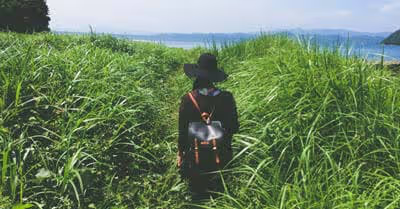Table of Contents
What are Hiking Socks?
You’ve probably been asking yourself; do I need special hiking socks? Of course, you do need special hiking socks. Well, that’s because your feet require all the help it can get, especially during long and strenuous hikes. This means that hiking socks will be of much help in giving you the needed support, temperature regulation, protection, and comfort required when on a hike. Regardless of how challenging the hiking terrain is, the right pair of hiking socks will make all the difference between an enjoyable outing and a very uncomfortable hiking trip.
This is exactly why you shouldn’t choose regular socks when hitting the trails. Well, that’s because they do not have the above-highlighted features and may leave your feet in a very precarious condition and full of very painful blisters.
Things to Consider when Choosing the Right Pair of Hiking Socks
We have to admit that choosing the right pair of hiking socks can be a little confusing if you don’t know what to look for. To make it a lot easier for you, here are the most important things to consider when looking for the right pair of hiking socks.
Hiking Socks Cushioning
Cushioning is all about the warmth and comfort that a pair of socks gives you. This feature helps in protecting your feet during high-impact activities such as hiking and running. You should keep in mind that the right cushioning should generally depend on the type of hike you’re planning to undertake and, of course, the weather conditions. For instance, a pair of socks with a thicker cushion may not be perfect when the weather is warm as it may leave your feet sweaty. Differently, a pair of socks with a thinner cushion may not be perfect when it’s cold out there. In essence, it’s vital to find the right amount of cushion that works best for the type of hiking trip that you’re planning to undertake.
The four types of cushioning include:
No cushioning – They’re ultra-light, very breathable and are perfect for hot-weather hikes.
Light cushioning – They’re fairly thin and have more cushioning around the heels and balls of your feet. They prioritize air regulation and comfort over warmth and that’s why they’re perfect for warm conditions.
Medium cushioning – Like light cushioning socks, they have more cushion around the heels and balls of your feet. They, however, prioritize warmth and are great for moderate weather conditions.
Heavy cushioning – Made for tough terrains, colder temperatures, and longer trips, they’re highly cushioned to make them perfect if you’re looking for something very think and warm. They’re, however, not ideal for warm weather conditions.
Hiking Socks Height
Hiking socks are available in different heights ranging from very short (may not show above the shoes) to very tall (almost touching your knees). When choosing the right hiking socks height, it’s vital to consider the cuffs of your hiking boots. In other words, you should go for a pair of socks that can perfectly protect your skin from rubbing directly against your hiking boots.
The four types of hiking socks heights to consider include:
No-show – They’re very short you’ll almost not see them once you’ve put on the boots. This means that they provide little to no protection against skin-and-boot scuff. You should, therefore, consider them for light hiking shoes or low-cut hiking boots.
Ankle height – They offer more protection around the ankle bone area. They’re perfect for low and mid-cut hiking boots.
Crew height – This is the standard height for hiking socks. They go a few inches above the ankle bones and are great in protecting your skin from rubbing off the shoes. They’re perfect for just about any type of hiking boots, and weather conditions.
Knee-high – They’re not very common but are perfect for mountain and night hikes. The fact that they cover your shins and calves will make your legs very warm, which makes them perfect for hiking through glaciers or extremely cold conditions.
Hiking Socks Fabrics
You’ll rarely find hiking socks that are entirely made of a single fabric. Instead, they’re generally made of a blend of fabrics. This is essential in offering the right balance in terms of warmth, comfort, functionality, durability, and fast-drying.
The most common types of hiking socks fabric include:
Wool – This is the most popular hiking socks fabric. We highly recommend it since it provides a perfect cushion and allows for appropriate temperature that is important in ensuring that your feet are not sweaty and smelly. Merino wool is arguably the best as it is itch-free and blends well with synthetic fabrics to ensure durability, faster drying, comfort, and warmth.
Nylon – This is a synthetic material that can improve faster drying and durability.
Polyester – This synthetic material is great in moisture-wicking, insulating, and faster drying. It blends perfectly well with both wool and nylon.
Silk – This is a natural insulator that is light and comfortable though may not be as durable as other materials.
Spandex – The best hiking socks will have a small percentage of spandex to make them elastic and to help hold their normal shapes.
Hiking Socks Fit
When choosing the right pair of hiking socks, it’s important to go for the right fit that will keep your feet comfortable at all times. You should avoid socks that are too small as this can create a lot of pressure on your feet. You should also avoid extremely big socks that will wrinkle inside the shoes and cause blister points.
You should, therefore, go for the right fit by knowing the size of your feet. Just make sure that the heel cup lines fit properly on the heels of your feet.
Conclusion
The importance of hiking socks in enhancing the comfort of your hiking trips can never be underestimated. With so many hiking socks available, it can be difficult to know exactly what’s best for you. But with the above-described features, it should be a lot easier to find a pair of hiking socks that will work perfectly for you. Just ensure that you prioritize comfort.
Recent Articles
















